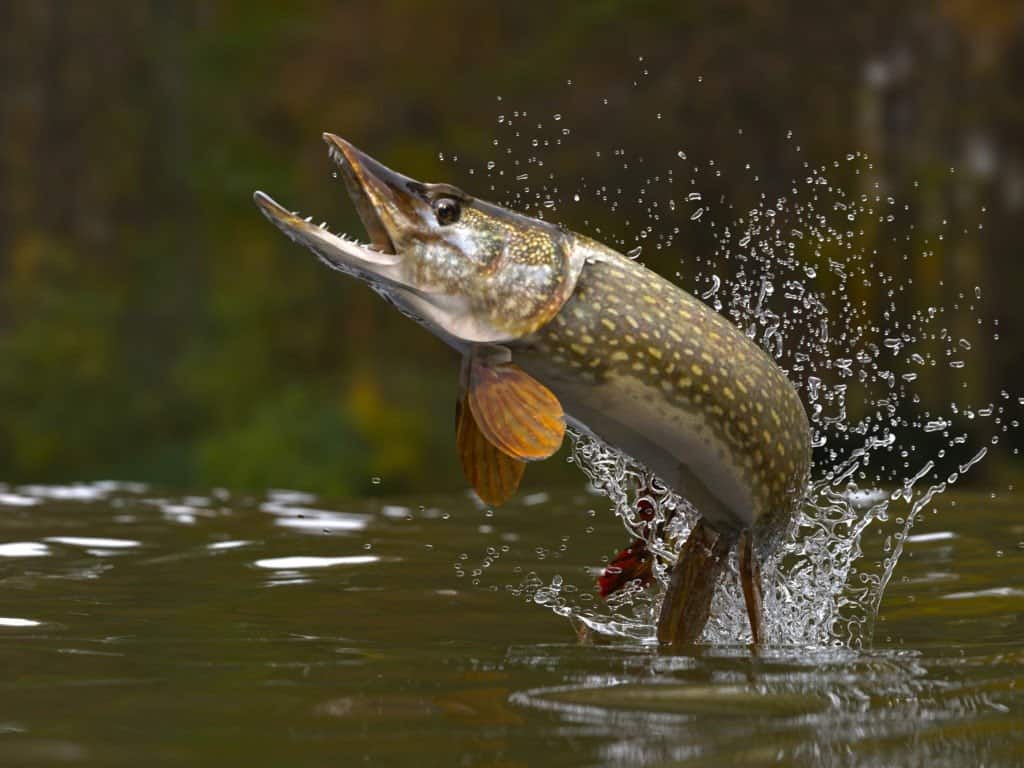Scientists make surprising discovery after attempting to remove dangerous fish from lake: ‘It took us 25 years to prove why’ – The Cool Down

Report on Evolutionary Adaptation of Invasive Species and Implications for Sustainable Development Goals
1.0 Executive Summary
A 25-year study on smallmouth bass in an Adirondack lake has revealed that intensive eradication efforts inadvertently drove the invasive species to evolve, making them more resilient. The fish adapted by maturing earlier and at smaller sizes, leading to a larger overall population. This case study underscores the significant challenges invasive species pose to achieving key Sustainable Development Goals (SDGs), particularly SDG 14 (Life Below Water) and SDG 15 (Life on Land). The findings highlight the critical need to shift focus from eradication to prevention and to develop adaptive management strategies informed by long-term ecological research.
2.0 Case Study: Invasive Smallmouth Bass in the Adirondacks
2.1 Background
Smallmouth bass, though native to North America, were introduced to the Adirondack region in the 20th century. Their establishment as an invasive species led to severe consequences for local ecosystems.
- Rapid proliferation in regional lakes.
- Significant decline in native fish populations due to competition and predation.
- Initiation of a long-term physical removal program by Cornell’s Adirondack Fishery Research Program to restore ecological balance.
2.2 Research Findings
A study published in the Proceedings of the National Academy of Sciences detailed the failure of the 25-year eradication effort. The primary conclusion was that the sustained removal pressure caused a rapid evolutionary response in the smallmouth bass population.
- The fish evolved to mature earlier in their life cycle.
- They began reproducing at a smaller physical size.
- This adaptation resulted in a larger, more resilient population, effectively counteracting the removal efforts.
3.0 Analysis of Impacts on Sustainable Development Goals (SDGs)
3.1 Threats to SDG 14 (Life Below Water) and SDG 15 (Life on Land)
The proliferation and evolution of invasive species like the smallmouth bass directly undermine the objectives of SDG 14 and SDG 15, which call for the conservation and sustainable use of aquatic and terrestrial ecosystems and the halting of biodiversity loss.
- Biodiversity Loss: Invasive species outcompete native flora and fauna for resources, leading to population declines and local extinctions, which is a direct contradiction to targets within SDG 14 and SDG 15.
- Ecosystem Degradation: They can alter the fundamental chemistry and structure of habitats, disrupting natural processes.
- Disease Transmission: Invasive species can introduce novel pathogens, decimating native populations that lack immunity.
3.2 Broader Implications for Sustainable Development
The impact of unchecked invasive species extends beyond biodiversity, affecting other critical SDGs.
- SDG 2 (Zero Hunger): By disrupting local ecosystems, invasive species can threaten the stability of fisheries and other food sources vital for human consumption and economic security.
- SDG 13 (Climate Action): Healthy, biodiverse ecosystems are more resilient to the impacts of climate change. Invasive species weaken this resilience, potentially exacerbating the effects of extreme weather events.
4.0 Recommendations and Strategic Outlook
The findings from the Adirondack study necessitate a re-evaluation of invasive species management to better align with sustainability targets.
- Prioritize Prevention: The primary strategy must be preventing the introduction of invasive species into new ecosystems, as eradication is often unfeasible and can have unintended consequences.
- Adopt Adaptive Management: For established invasive populations, management strategies must be flexible. This could include less frequent removal or targeting specific subsets of the population to reduce evolutionary pressure.
- Invest in Long-Term Research (SDG 17 – Partnerships for the Goals): Continuous, long-term monitoring and research are essential for understanding ecosystem responses and evaluating the effectiveness of management tools. Collaborative efforts between academic institutions and environmental agencies are crucial for generating this knowledge.
1. Which SDGs are addressed or connected to the issues highlighted in the article?
The following SDGs are relevant to the article:
-
SDG 15: Life on Land
This goal is directly addressed as the article focuses on the impact of an invasive species (smallmouth bass) on a freshwater lake ecosystem in the Adirondacks. It discusses the resulting decline in native fish populations, which is a direct threat to biodiversity and the health of the ecosystem. The core issue is about protecting and restoring terrestrial and inland freshwater ecosystems and their services.
-
SDG 14: Life Below Water
Although this goal primarily focuses on marine and coastal ecosystems, its principles of conserving and sustainably using aquatic resources are applicable. The article’s subject—the management of fish populations and the health of a lake ecosystem—aligns with the broader aims of protecting life below water from threats like invasive species.
2. What specific targets under those SDGs can be identified based on the article’s content?
The following targets can be identified:
-
Target 15.8: By 2020, introduce measures to prevent the introduction and significantly reduce the impact of invasive alien species on land and water ecosystems and control or eradicate the priority species.
The article is centered on this target. It details the “25 years of efforts to eradicate the smallmouth bass” from Adirondack lakes. The failure of these efforts and the discussion on the need to “prevent invasive species from entering ecosystems in the first place” directly relate to the control and prevention measures outlined in this target.
-
Target 15.5: Take urgent and significant action to reduce the degradation of natural habitats, halt the loss of biodiversity and, by 2020, protect and prevent the extinction of threatened species.
This target is relevant because the introduction of smallmouth bass “resulted in significant declines in native fish populations.” The efforts to remove the invasive bass were a direct action aimed at halting this loss of biodiversity and protecting the native species from being outcompeted and potentially driven to extinction within that ecosystem.
-
Target 14.2: By 2020, sustainably manage and protect marine and coastal ecosystems to avoid significant adverse impacts… and take action for their restoration.
While the article discusses a freshwater lake, the principle of this target applies. The efforts to remove the smallmouth bass represent an action to manage and protect the lake ecosystem to avoid the “significant adverse impacts” caused by the invasive species. The goal of the researchers was to restore the ecosystem’s natural balance by removing the invasive threat.
3. Are there any indicators mentioned or implied in the article that can be used to measure progress towards the identified targets?
Yes, the following indicators are mentioned or implied:
-
Population size of invasive species
The article states that despite eradication efforts, the smallmouth bass “populations continued to thrive” and resulted in a “larger overall population.” Measuring the population size or density of the smallmouth bass is a direct indicator of the effectiveness of control efforts (Target 15.8).
-
Population size of native species
The article notes that the invasive bass caused “significant declines in native fish populations.” Therefore, monitoring the population levels of these native species serves as a key indicator for assessing biodiversity loss and the success of restoration efforts (Target 15.5).
-
Biological traits of the invasive species
The study found that the bass “evolved to mature earlier and grow more quickly, resulting in smaller fish.” These biological characteristics—age at maturity, growth rate, and average individual size—can be used as indicators to understand the adaptive responses of invasive species to management pressures.
-
Effectiveness of management efforts
The article discusses the “25 years of efforts to eradicate” the bass and the ultimate conclusion that these efforts failed. The duration, methods (“physically remove this species”), and outcome of these management programs are themselves indicators of progress (or lack thereof) toward controlling invasive species.
4. Table of SDGs, Targets, and Indicators
| SDGs | Targets | Indicators |
|---|---|---|
| SDG 15: Life on Land | 15.8: …reduce the impact of invasive alien species on land and water ecosystems and control or eradicate the priority species. |
|
| 15.5: …halt the loss of biodiversity and, by 2020, protect and prevent the extinction of threatened species. |
|
|
| SDG 14: Life Below Water | 14.2: …sustainably manage and protect … ecosystems to avoid significant adverse impacts… and take action for their restoration. |
|
Source: thecooldown.com

What is Your Reaction?
 Like
0
Like
0
 Dislike
0
Dislike
0
 Love
0
Love
0
 Funny
0
Funny
0
 Angry
0
Angry
0
 Sad
0
Sad
0
 Wow
0
Wow
0













































































